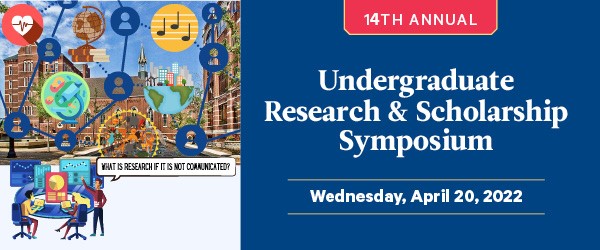Presenter Information
Avishek Acharya - History Department
Abstract
The Hill District of Pittsburgh is a neighborhood of national importance, having hosted jazz legends, nationally renowned newspapers, and artists. However, the Hill of today is much smaller than it has ever been; the destruction of the Lower Hill effectively separated the neighborhood from not only another part of the previously collectively one singular neighborhood but separated the neighborhood and its residents from the economic hubs in both down and uptown. The wholesale destruction of the Lower Hill District can be attributed to both the national trend of “urban renewal,” a series of misguided, often explicitly racist attempts to undo the effect of white flight but also to the local trend of the “Pittsburgh Renaissance”. In these trends we can trace a complicit body politic in Pittsburgh, mass evictions of residents, far-ranging destruction of some of Pittsburgh’s historically important landmarks, including what had been by-then the oldest Black church of Pittsburgh. The paper combines both policy and oral history to explore the roots of the rhetoric that led to the evictions, the community’s fight to preserve the neighborhood, and the future of both the land and the people who were forcefully evicted. It uses archival research of both the Pittsburgh Courier and the Pittsburgh Post-Gazette as well research conducted by local and national historians. It was originally published as a class project in a course taught by Dr. Jennifer Taylor, without whose guidance in using local archives was instrumental in establishing the historical trends that led to the destruction, how it played out, and countering narratives about the Lower Hill that have been pervasive and untrue in local accounts of the neighborhood.
School
McAnulty College and Graduate School of Liberal Arts
Advisor
Dr. Jennifer Taylor
Submission Type
Paper
Publication Date
April 2022
Included in
African American Studies Commons, Political History Commons, Public History Commons, Social History Commons, Social Justice Commons, United States History Commons, Urban Studies and Planning Commons
“Mecca for the Colored People”: Reexamining the Demolition of Pittsburgh’s Lower Hill District
The Hill District of Pittsburgh is a neighborhood of national importance, having hosted jazz legends, nationally renowned newspapers, and artists. However, the Hill of today is much smaller than it has ever been; the destruction of the Lower Hill effectively separated the neighborhood from not only another part of the previously collectively one singular neighborhood but separated the neighborhood and its residents from the economic hubs in both down and uptown. The wholesale destruction of the Lower Hill District can be attributed to both the national trend of “urban renewal,” a series of misguided, often explicitly racist attempts to undo the effect of white flight but also to the local trend of the “Pittsburgh Renaissance”. In these trends we can trace a complicit body politic in Pittsburgh, mass evictions of residents, far-ranging destruction of some of Pittsburgh’s historically important landmarks, including what had been by-then the oldest Black church of Pittsburgh. The paper combines both policy and oral history to explore the roots of the rhetoric that led to the evictions, the community’s fight to preserve the neighborhood, and the future of both the land and the people who were forcefully evicted. It uses archival research of both the Pittsburgh Courier and the Pittsburgh Post-Gazette as well research conducted by local and national historians. It was originally published as a class project in a course taught by Dr. Jennifer Taylor, without whose guidance in using local archives was instrumental in establishing the historical trends that led to the destruction, how it played out, and countering narratives about the Lower Hill that have been pervasive and untrue in local accounts of the neighborhood.

